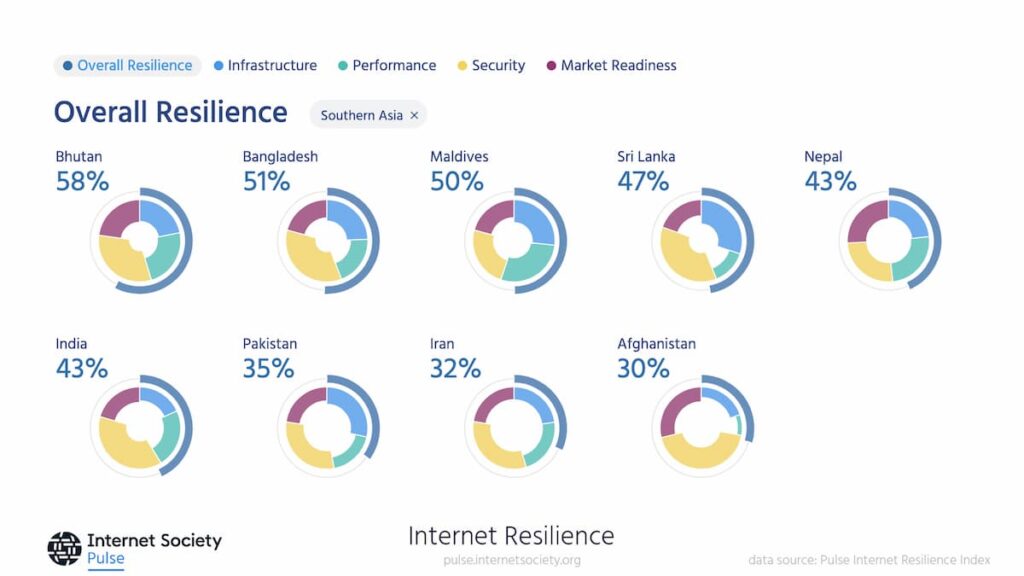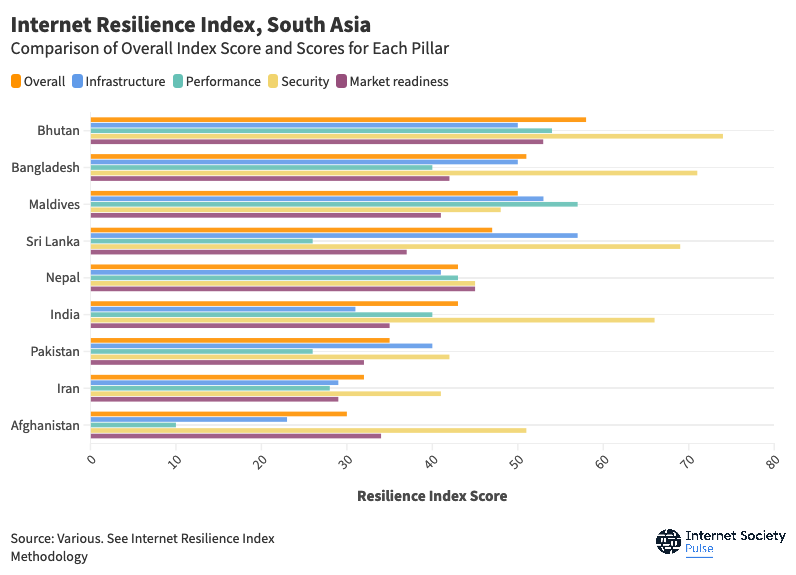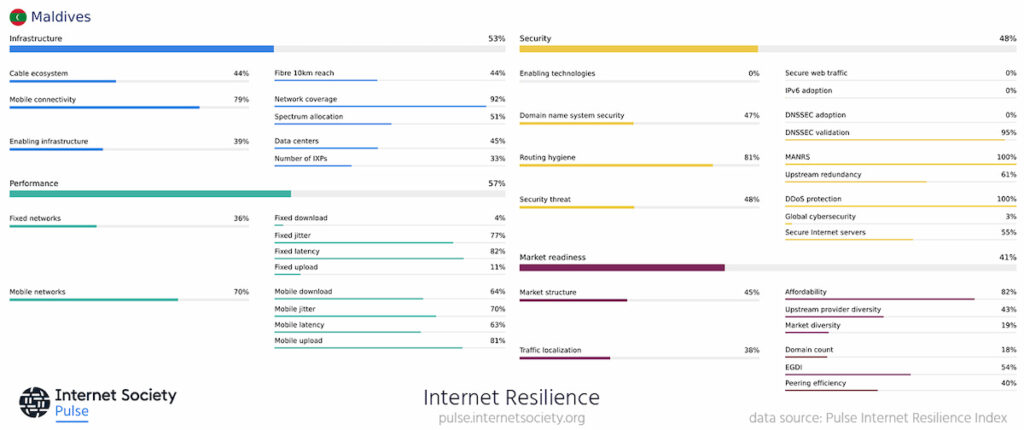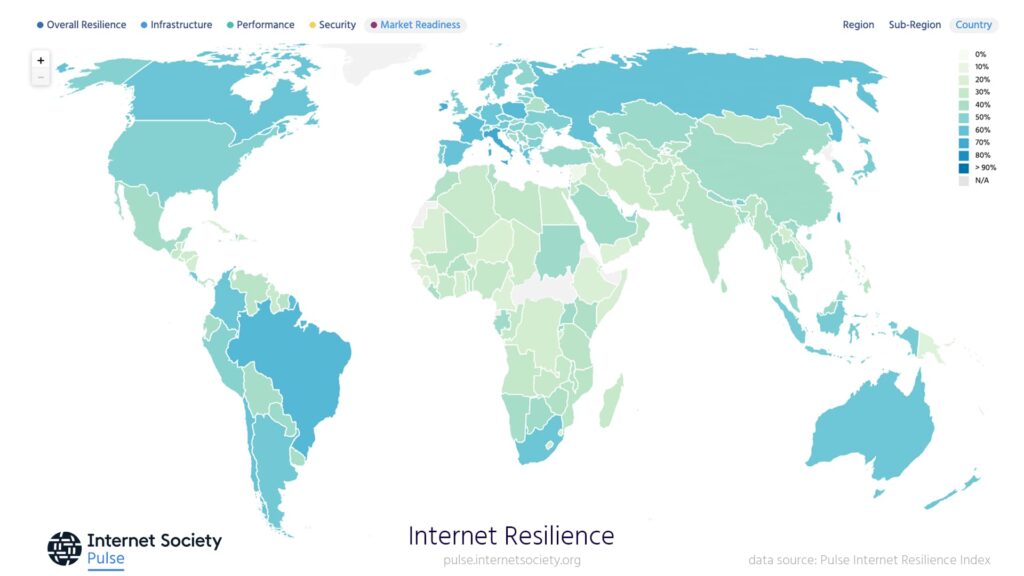In the Maldives, the Internet is playing a critical role to its residents, helping them adapt to the challenges of isolation and harsh terrain—and to capitalize on its picture-perfect views:
- The government, health, and education sectors are expanding their e-services to remotely attend to the needs of those living on remote and less populated islands.
- Scientists from around the world are monitoring and measuring the impact of sea level rise on the lowest-lying country in the world — 80% of the Maldives population lives less than one meter above sea level.
- Local tourism businesses can market directly to new travelers as well as serve the Internet needs of nearly 2 million tourists that descend on the country each year.
- The government is diversifying its economy against the highly reliant tourism industry by improving technical and vocational skills and supporting local entrepreneurs with a focus on ICT.
For each of these metrics to be successful, a resilient local Internet is crucial, that is, one that maintains an acceptable level of service in the face of faults and challenges to normal operation.
Measuring the Internet’s Resilience by Its Pillars
The Internet Resilience Index (IRI) tracks open-source Internet resiliency metrics to support the development of policies and infrastructure to improve Internet resilience at local, regional, and global levels. While the index originally only tracked Internet Resilience for Africa it’s been expanded to include more than 170 countries.
Using best practice methodologies, the Internet Resilience Index calculates a snapshot of a country’s resilience using four pillars:
- Internet Infrastructure — The existence and availability of physical infrastructure that provides Internet connectivity.
- Internet Performance — The ability of the network to provide end users with seamless and reliable access to Internet services.
- Internet Security — The ability of the network to resist intentional or unintentional disruptions through the adoption of security technologies and best practices.
- Market Readiness — The ability of the market to self-regulate and provide affordable prices to end users by maintaining a diverse and competitive market.
Decision-makers can use this snapshot to understand the strengths and weaknesses in their local Internet ecosystem and make data-driven decisions as to where to invest to improve their country’s overall resilience.
Smaller Countries Leading the Way
This snapshot from the Internet Resilience Index shows the Maldives has the third highest overall IRI score in South Asia, with Bhutan and Bangladesh in the number one and two spots, respectively.

Figure 1: Overall Internet resilience for South-East Asia.
The different colors of the donut charts are related to the four pillars: Infrastructure (blue), Performance (green), Security (yellow), and Market Readiness (maroon). If we compare these for each country in the region (Figure 2) we can see that the Maldives’ high IRI score is thanks largely to its respective superior Infrastructure (53%) and Performance (57%) scores.

Figure 2: Breakdown of the Internet resilience for each country in South Asia based on the four pillars, which contribute to the smooth operation of the Internet: Infrastructure, Performance, Security, and Market Readiness.
The IRI allows you to dig further into these pillars to understand what metrics are contributing (or not contributing) to these scores. In Figure 3 we can see that in the case of the Maldives, its security score is buoyed by nearly 100 percent DNSSEC validation, MANRS participation, and DDoS protection but is being hampered by a distinct lack of local HTTPS (secure web traffic) and IPv6 adoption.
IPv6 is the latest version of the fundamental technology (Internet Protocol) that powers the Internet. The previous version, IPv4, is still in operation on many networks around the world but it can only support an Internet of a few billion devices. By contrast, IPv6 can support an Internet of billions of billions of devices and can provide enough address space to meet the needs of the growing Internet for decades to come. Simply put, the Internet has outgrown its original design and IPv6 is the solution.
Learn how the Maldives launched its first IXP.

Figure 3: Breakdown of the components that make up the overall Internet Resilience Index score for the Maldives.
Another notable gap is DNSSEC adoption, which translates to the Maldives country-code Top Level Domain (ccTLD) registry having not deployed Domain Name System (DNS) Security Extensions. DNSSEC is a significant security protocol that helps to secure DNS responses. This is interesting given that 100 percent of Maldives Internet users are validating for DNSSEC.
DNSSEC (Domain Name System Security Extensions) is a protocol that adds an extra layer of security to the Domain Name System (DNS) by digitally signing DNS data. This prevents hackers from intercepting and modifying data when it’s transmitted, reducing the risk of attacks such as DNS cache poisoning.
There are two sides to DNSSEC: signing and validating. On the one side, DNS operators sign domain names cryptographically. On the other side, when you do anything online that uses domain names, the DNS resolver you use, often at your Internet Service Provider (ISP), performs DNSSEC validation to check whether DNSSEC signatures are correct.
For DNSSEC to provide its extra layer of security globally, we need both: domain names to be signed, and local DNS resolvers to be checking for those DNSSEC signatures.
Learn more about DNSSEC.
If we refer to Figure 1 again, you’ll note that all countries in South Asia except Bhutan have a market readiness score of less than 50 percent. This is not something that is exclusive to the region, as you can see in Figure 4, with Italy (71%), Ireland (70%), and Brazil (65%) leading the way.

Figure 4: The map feature allows you to view the global capabilities of each IRI pillar, in this case, Market Readiness.
Identify Weaknesses to Make Data-Driven Decisions
In light of these metrics, it’s promising to see programs such as the World Bank’s Digital Maldives for Adaptation, Decentralization and Diversification (DMADD) Project, supporting the Maldives to, directly and indirectly, improve a number of these indices, including:
- Increasing its competitiveness in the broadband retail market (Market Diversity).
- Increasing the number of people using its digital ID platform to access services remotely, online (E-Government Development Index).
- Decreasing the average IP Transit Wholesale Cost (Affordability) from USD $75Mbps/month to USD $20Mbps/month.
- Developing a standard operating procedure for a Computer Incident Response Team, which can indirectly improve their security posture against threats.
- Improving Internet connectivity for local island councils (i.e., fixed download) from 2MBps to 10 MBps (average Fixed download speed).
While these actions are coincidental, it’s hoped that the IRI will help guide decisions surrounding future Internet resiliency projects and ultimately help decision-makers make informed choices that align with what the data is telling them.

